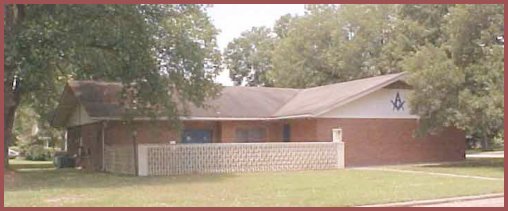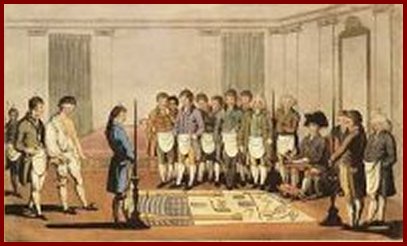|
Ancient Free &
Lodges and Grand Lodges whose charters' roots derive from the United Grand Lodge of Ancient Freemasons of England , The Grand Lodge of Ireland or the Grand Lodge of Ancient Free and Accepted Masons of Scotland use the expression, A.·.F.·.& A.·.M.·.  Mostly Irish freemasons formed this Grand Lodge in London in 1751. Properly titled the "Grand Lodge of Free and Accepted Masons of England according to the Old Institutions," it is also called Atholl freemasons, after the third and fourth Dukes of Atholl. Free "It is quite likely that the word 'freemason' represented at least three distinct meanings, each having respect to a different century." 1 Skilled mediaeval builders worked with an even-grained limestone or sandstone called freestone, first mentioned in 1212 in Normandy. The term free-stone mason is recorded in 1375 and the term was easily condensed to free mason. Centuries later this meaning became secondary, if not forgotten, when town mason guilds became more powerful. It is hypothesized that a Free Mason was free of his Guild; he had the freedom of its privileges and was entrusted with certain rights. The London Company of Freemasons changed its name to that of Masons in 1655-56, perhaps recognizing that the term had undergone yet another change in meaning. Members who were not stonemasons could be accepted in the Company and were termed speculative, free or accepted. In time the terms became synonymous and "free" then referred to an inner fraternity of speculative masons. There are many other discredited theories. The tradition that sixth and seventh century builders travelled France and Italy freely by authority of Papal bull is unfounded. Another theory has it that a mediaeval freemason was either not tied to the land or else, being attached to a monastary or ecclesiastical order, was free from the guilds. During the height of the abbey and church building period, there were few, if any, town mason guilds so this derivation is suspect. Free and Accepted This term was first used in 1722 in J. Roberts', The Old Constitutions belonging to the Ancient and Honourable Society of Free and Accepted Masons. Accepted "Acception" was an Inner Fraternity of speculative freemasons found within the Worshipful Company of Masons of the City of London. Operative members were "admitted" by apprenticeship, patrimony, or redemption; speculative members were "accepted". First recorded use of the term dates from 1620. 1. Bernard E. Jones. Freemasons' Guide and Compendium. London: George G. Harrap & Company Ltd., 1950. p. 152 [note pp. 147-61.] Reference:
Encyclopedia of Freemasonry. Albert G. Mackey. Macoy Publishing: Virginia. 1966. 
This Copyrighted page was reprinted with permission, from the web site of "The Grand Lodge of British Columbia and Yukon A.F. & A.M" located at
http://freemasonry.bcy.ca/aqc/history_theories.html

No © Copyright. All material in this site may be used to educate everyone, Masons and non-Masons alike about Freemasonry and for the promotion of Freemasonry.
|
The Pine Island Webwright
Page Crafted By Corky


